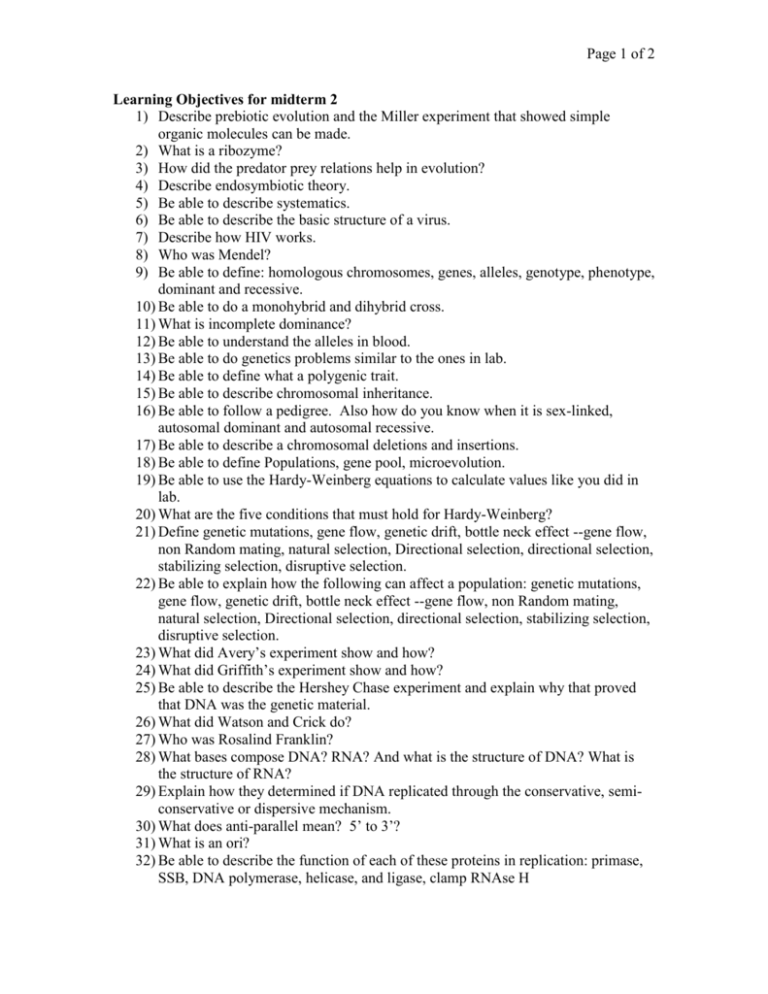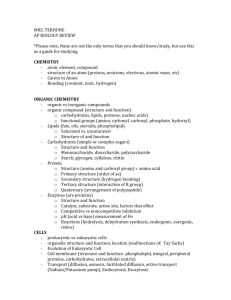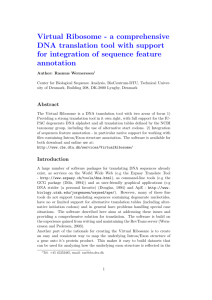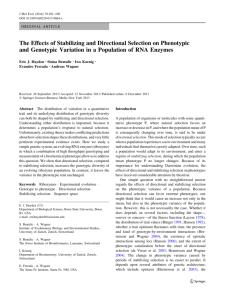Learning Objectives for midterm 2
advertisement

Page 1 of 2 Learning Objectives for midterm 2 1) Describe prebiotic evolution and the Miller experiment that showed simple organic molecules can be made. 2) What is a ribozyme? 3) How did the predator prey relations help in evolution? 4) Describe endosymbiotic theory. 5) Be able to describe systematics. 6) Be able to describe the basic structure of a virus. 7) Describe how HIV works. 8) Who was Mendel? 9) Be able to define: homologous chromosomes, genes, alleles, genotype, phenotype, dominant and recessive. 10) Be able to do a monohybrid and dihybrid cross. 11) What is incomplete dominance? 12) Be able to understand the alleles in blood. 13) Be able to do genetics problems similar to the ones in lab. 14) Be able to define what a polygenic trait. 15) Be able to describe chromosomal inheritance. 16) Be able to follow a pedigree. Also how do you know when it is sex-linked, autosomal dominant and autosomal recessive. 17) Be able to describe a chromosomal deletions and insertions. 18) Be able to define Populations, gene pool, microevolution. 19) Be able to use the Hardy-Weinberg equations to calculate values like you did in lab. 20) What are the five conditions that must hold for Hardy-Weinberg? 21) Define genetic mutations, gene flow, genetic drift, bottle neck effect --gene flow, non Random mating, natural selection, Directional selection, directional selection, stabilizing selection, disruptive selection. 22) Be able to explain how the following can affect a population: genetic mutations, gene flow, genetic drift, bottle neck effect --gene flow, non Random mating, natural selection, Directional selection, directional selection, stabilizing selection, disruptive selection. 23) What did Avery’s experiment show and how? 24) What did Griffith’s experiment show and how? 25) Be able to describe the Hershey Chase experiment and explain why that proved that DNA was the genetic material. 26) What did Watson and Crick do? 27) Who was Rosalind Franklin? 28) What bases compose DNA? RNA? And what is the structure of DNA? What is the structure of RNA? 29) Explain how they determined if DNA replicated through the conservative, semiconservative or dispersive mechanism. 30) What does anti-parallel mean? 5’ to 3’? 31) What is an ori? 32) Be able to describe the function of each of these proteins in replication: primase, SSB, DNA polymerase, helicase, and ligase, clamp RNAse H Page 2 of 2 33) What is a replication fork, replication bubble, leading strand, lagging strand and Okazaki fragments. 34) What is the central Dogma? 35) What are the difference between RNA and DNA? 36) Be able to describe what happens at initiation, elongation and termination of transcription. 37) What is an operon? 38) Explain how the lac operon works. What is a repressor? 39) What is a promoter? 40) Describe eukaryotic RNA processing. 41) What are transcription factors. 42) What is a splicesome? 43) What is translation? 44) Be able to read the codon table. 45) What are the three RNAs involved in translation and what does each of them do? 46) What is the function of the P site, A site and E site in a ribosome? 47) What is needed to initiate translation? 48) How does the elongation phase of translation work? 49) How does termination of translation occur? 50) Can more than one ribosome work on a transcript? 51) What is coupled transcription and translation? 52) How does the ribosome know when to dock with the Rough ER? 53) Define the following terms: energy, potential energy, kinetic energy, 1st and 2nd law of thermodynamics, coupled reactions, ADP and ATP. 54) Define the following terms: enzyme, substrate, product, metabolic pathway, activation energy, active site. 55) What is the function of NAD, FAD and NADP. 56) What are the three stages of glucose metabolism? And where do each of these stages take place? 57) Where is the NADH generated and how much for every one glucose? Where is the FADH2 generated and how much for every one glucose? Where is the carbon dioxide generated? Where is the ATP generated? 58) What organelle is involved in photosynthesis? 59) How do the photosystems work? Which one generates the ATP which generates NADPH? From where to the electrons come from to replenish the photosystems? 60) How does ATP synthase work? 61) Where does the light reactions (photosystems) and dark reactions (Calvin system) take place? What is the role of both and what is needed for both to function? 62) Where is the carbon dioxide used? The water? The sunlight? Where is sugar and oxygen generated? 63) How does the electron transport chain generate the ATP? Where is the oxygen used?










